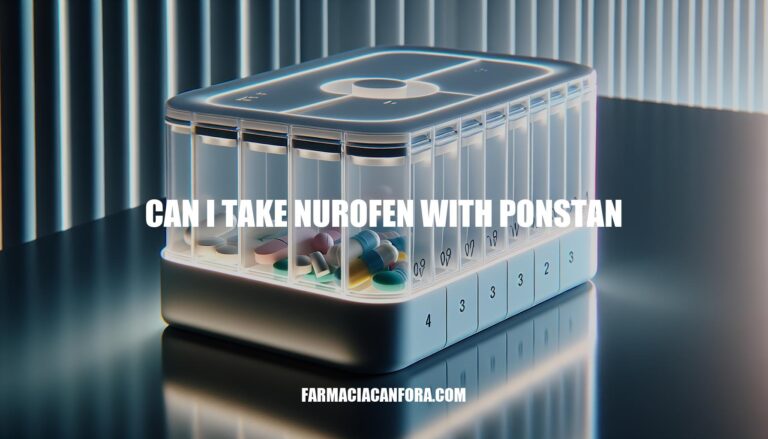


When considering whether you can take Nurofen (ibuprofen) with Ponstan (mefenamic acid), it’s crucial to understand drug interactions. Both medications are non-steroidal anti-inflammatory drugs (NSAIDs), and taking them together can increase the risk of gastrointestinal issues such as inflammation, bleeding, and ulcers. Understanding these interactions helps prevent adverse effects and ensures safe and effective use of medications. Always consult a healthcare professional before combining medications.
Nurofen (Ibuprofen):
Ponstan (Mefenamic Acid):
Both medications are part of the NSAID family, which helps manage pain and inflammation by targeting the same biochemical pathway.
Taking Nurofen (ibuprofen) with Ponstan (mefenamic acid) can increase the risk of several side effects and complications:
Gastrointestinal Issues: Both medications are NSAIDs, which can irritate the stomach lining, leading to symptoms like abdominal pain, nausea, vomiting, diarrhea, and even more severe issues like gastrointestinal bleeding or ulcers.
Increased Bleeding Risk: NSAIDs can interfere with blood clotting, increasing the risk of bleeding. This can manifest as easy bruising, prolonged bleeding from cuts, or more serious internal bleeding.
Kidney Problems: Combining these medications can strain the kidneys, potentially leading to decreased kidney function or kidney damage, especially in individuals with pre-existing kidney conditions.
Cardiovascular Risks: There is an increased risk of heart attack or stroke with prolonged use of NSAIDs, and using both together might amplify this risk.
Other Complications: Additional side effects can include dizziness, headaches, elevated liver enzymes, and allergic reactions.
It’s crucial to consult a healthcare provider before combining these medications to ensure it’s safe based on your health profile.
Consulting a healthcare professional before taking Nurofen (ibuprofen) with Ponstan (mefenamic acid) is crucial due to the following reasons:
Always seek medical advice to ensure safe and effective use of these medications.
Here are some safer alternatives for pain management:
Always consult with a healthcare provider before starting any new medication or therapy.
Taking Nurofen (ibuprofen) with Ponstan (mefenamic acid) can increase the risk of gastrointestinal issues, bleeding, kidney problems, cardiovascular risks, and other complications.
It’s crucial to consult a healthcare professional before combining these medications due to their potential interactions and side effects. They can help determine if it’s safe based on your health profile and recommend alternative pain management options such as: